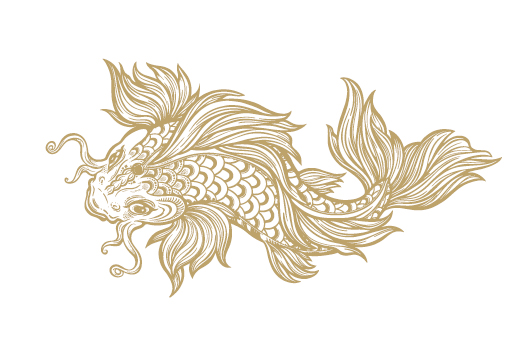
Long before the threat of tariffs on Chinese goods loomed large, brick-and-mortar retailers in the US were facing challenges. So far this year, US retailers have announced plans to shut down over 7,000 stores after almost 6,000 closed in 2018, according to research and advisory firm Coresight Research, which estimates that the total could climb as high as 12,000 by the end of the year.
New China tariff threats the US administration made in May did nothing to alleviate the pressures. The proposed tariffs, which have been suspended for now (see box), would profoundly impact consumers. China currently supplies 42% of all apparel, 73% of household appliances, and 88% of toys sold in the US, according to the National Retail Federation (NRF). And a recent analysis from education and research website World’s Top Exports indicates that China is the largest exporter of jewelry in the world. With $13.3 billion in outgoing jewelry shipments last year, it accounted for 12.9% of the global total.
A volatile state
“For retail, these [new] tariff increases [would] be on a magnitude that has not been witnessed in decades,” says Johan Gott, principal in the consumer and retail practice of global management consultant A.T. Kearney. “Over $100 billion of consumer goods would see tariffs imposed.”
That could directly impact retailers’ bottom lines, warns Gott. “The cost of goods would rise. Retailers have the choice to absorb that cost, or to pass it on to consumers. In the first instance, it would go straight to margins, which in most cases are already razor-thin.” But increased prices could result in fewer purchases, he says.
Discount retailers and general-merchandise retailers would be most at risk, predicts Tyler Higgins, a director in the retail practice of consultancy firm AArete. But while industries such as auto parts, and retailers with a diversified manufacturing base, would be safer, even these could suffer, he cautions. “As [the stock market] rises, optimism reigns, and as it falls, so does optimism. Tariff fears produce a similar reaction.”
US retail is already in a volatile state, continues Higgins. “The tariffs are just the next pressure point...that will threaten more retailers and continue to result in closures by all types of retailers. If the effect of tariffs kicks in, we expect those retailers that are the most innovative, with the most loyal customers and the most diverse supply base, to be in a position to increase their competitive advantage over those retailers that continue to struggle.”
Not an ‘apocalypse’
Despite these concerns, Marie Driscoll, managing director of luxury and fashion at Coresight, cautions against panic. While President Donald Trump’s trade policies are exacerbating retail’s problems, she says, there are other forces at work. A Coresight report from early this year positioned 2019 as a year of reinvention for retail, with more “spectacular” and data-driven offerings, and increasingly smooth integration of technology with brick-and-mortar stores, among other trends.
In addition, she says, store owners and analysts would do well to stop using the term “retail apocalypse” when it comes to tariffs — or anything else, for that matter. Calling it “an over-used phrase that surfaced about two years ago,” she says current concerns don’t warrant hyperbolic language, but flexibility, diversification, and new avenues of sourcing.
“The proposed tariffs have left the retail industry in a state of indecision,” she points out, adding that although the tariffs are on hold, the retail industry shouldn’t be too sanguine, since trade issues remain unresolved. “Further diversification of production away from China is likely.”
Driscoll also doesn’t see consumers willing to endure higher prices from stores that don’t manage to diversify. “What retailers and consumers need to know is that in the short term, as retailers and brands move to other regions for product sourcing, the apparel, footwear, and accessories ecosystem will come under strain to meet the demand that China has hitherto been meeting. This could have the adverse impact of increasing product prices, similar to the increases the tariffs would have. And given the over-abundance of most goods, it is unlikely the increased costs could be passed along to the consumer in the form of higher prices.”
Impact on jewelry
For the gem and jewelry industry, the proposed tariffs would have a profound effect, says David Bonaparte, president and CEO of Jewelers of America (JA). Last year, US imports from China included over $2.08 billion in jewelry, $233.1 million in gem diamonds and $1.07 billion in gemstones, according to data from the US Census Bureau. As such, Bonaparte says the tariffs — which his organization has opposed — would impact natural and cultured pearls, diamonds, rubies, sapphires, emeralds, gold and silver jewelry parts, gold necklaces, and synthetic gemstones.
“While China should be held accountable for its unfair trade practices, and we must protect the intellectual property and competitiveness of American companies, imposing tariffs, which put the bulk of the burden on US consumers and businesses, is not the answer,” he asserts.
Yet like Driscoll, he cautions against fearmongering.
“Using a term like ‘retail apocalypse’ is not helpful to the health of our retail community,” he states. “Retail is alive, and we don’t need to push forth any unnecessary fear that could [erode] consumer confidence.”
JA is closely monitoring the issue, Bonaparte adds. “We took a group of jewelers to Washington, DC, for our annual fly-in, and we asked lawmakers to push the Trump administration to make a deal and end the trade war. We need to fight for our independent jewelers to ensure they can continue
to prosper.”
Article from the Rapaport Magazine - August 2019. To subscribe click here.